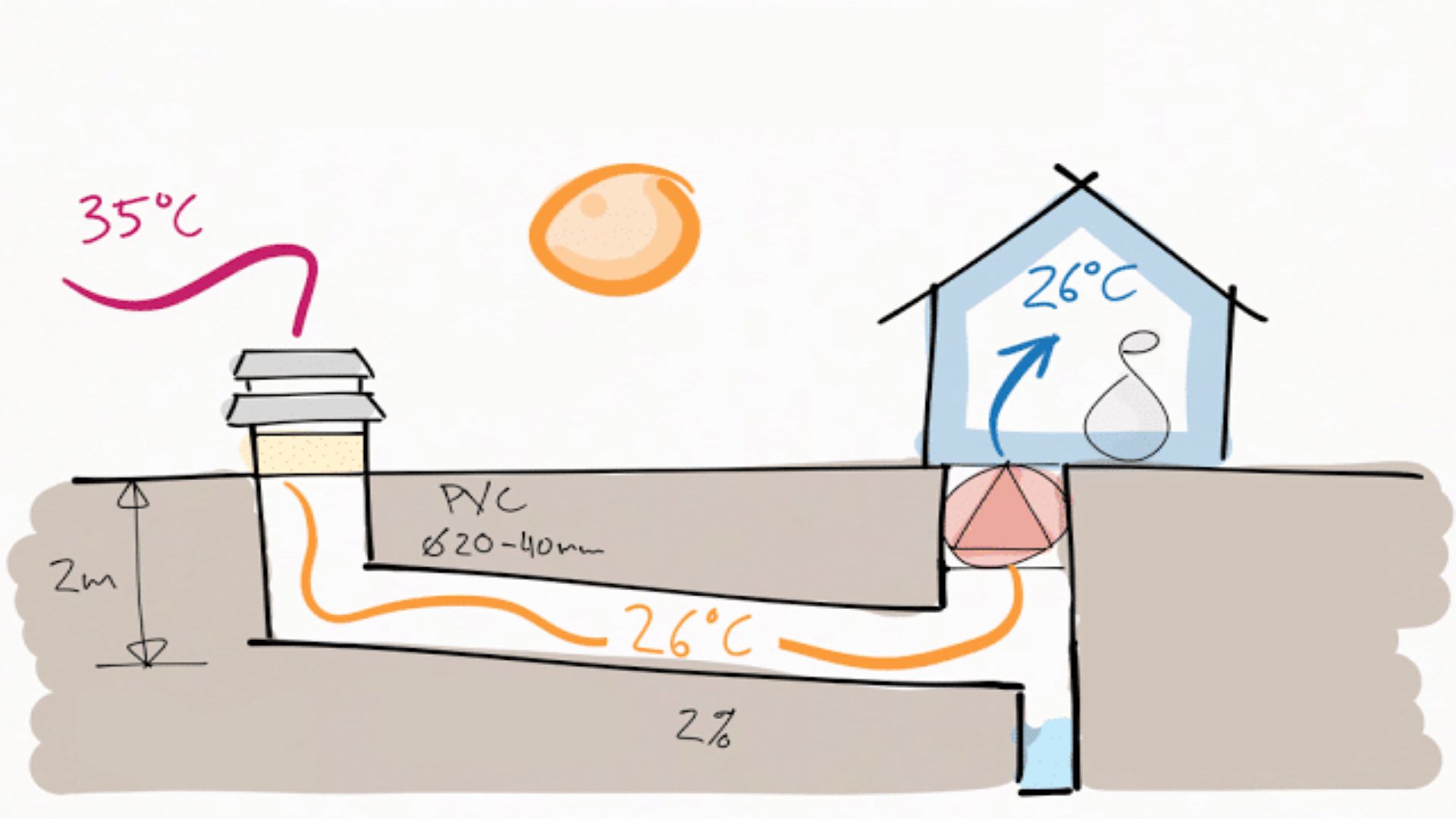Canadian wells, also known as Provençal wells (names that refer to the geography where they were first used), are alternative air-conditioning devices that make use of geothermal energy. Their operation is based on a basic principle: the ambient temperature of the subsoil is much more stable than that of the surface.
In fact, at a depth of 2 to 3 metres underground, temperatures remain stable, close to comfort levels, between 18 and 24 ºC. So, if we install ducts at this depth and circulate the air through them, it will acquire the temperature of the ground. We will therefore only have to conduct that air to the room or premises in question for air conditioning.

During the winter months, the temperature in the subsoil is higher than that of the outside environment. Therefore, the air from outside will warm up as it circulates through the underground pipes and, by conducting it into the room or premises, will help to improve its climatic conditions. In summer, the opposite will be true: the temperature outside is higher than the temperature underground and so, as the air passes through the underground pipes, it will cool down and enter the room at several degrees lower than the ambient temperature. This will improve the comfort of the room and help us to reduce the consumption of air conditioning.

Amusement Logic, in order to improve the energy efficiency of the leisure and tourism projects in which it participates, is studying the application of Canadian wells in different spaces, including technical rooms. Often, these departments are underground, so it is feasible to take advantage of the earthworks to build a system of Canadian wells to generate a geothermal exchange and to passively heat and ventilate these premises. This minimises the need for air-conditioning units.

By Francisco Lozano, MEP engineer in the Architectural Department of Amusement Logic






